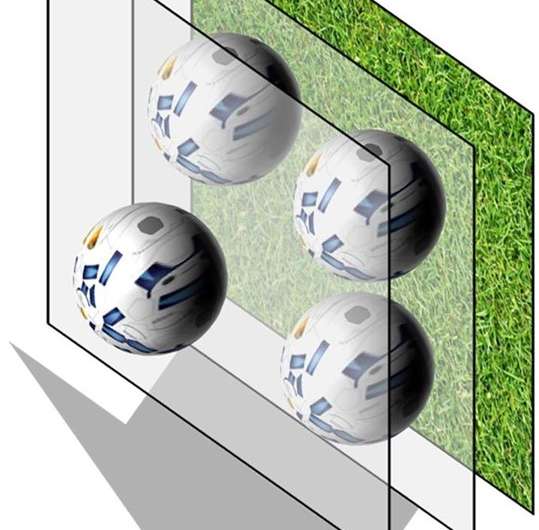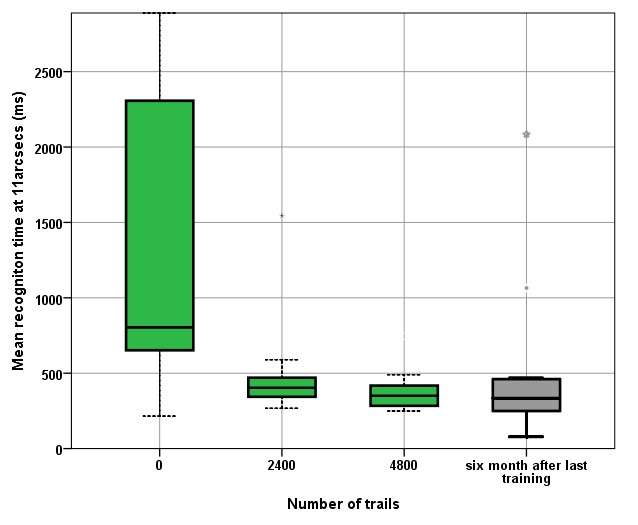Training can improve athletes' stereo vision

Stereo vision allows individuals to perceive depth differences in their surroundings. Important to pedestrians and drivers, for example, depth perception plays a key role in many sporting activities. If the ability to accurately determine the distance and speed of a fast-moving object can be improved, athletes have the potential to improve their performance. In a new study published in Restorative Neurology and Neuroscience, researchers found that by training athletes using repetitive stereoscopic stimuli, their reaction speed to those stimuli could be significantly improved.
Using a commercial vision training apparatus (c-Digital Vision Trainer), 15 male soccer athletes were trained over 12 sessions of 15 minutes each over a period of six weeks. They were presented images on a 3-D-TV simulating moving soccer balls. Each ball appeared to be both moving towards them and rotating, with one ball appearing to be closer to the observer.
Subjects were required to pick out which ball is "in front" and indicate this as quickly as possible by pointing to that ball. The time to see the depth difference plus the time for the motor reaction was defined as "response time." The total "response time" minus the time for the motor reaction was defined as "processing time" in the tests. By testing different grades of complexity of the stimuli, the time for the motor reaction and the "processing time" could be differentiated
"Elite athletes often operate at suprathreshold levels, which cannot be determined by classical stereo vision tests," explained principal investigator Georg Michelson, MD, Department of Ophthalmology of Friedrich-Alexander-University Erlangen-Nürnberg (FAU), Erlangen, Germany. "Processing time, as the reaction time in which the absence or presence of depth was identified correctly, is of better predictive value for perceiving depth than the stereo threshold only. Our aim was to determine whether repetitive dynamic stereo testing with a limited time frame can induce a significant long-lasting improvement of stereo processing time in a group of young athletes with highly developed stereo acuity."

The apparent distance between the nearest ball and the three other balls can be adjusted in the apparatus. At large distances, each subject would likely be able to identify the nearest ball quickly, but at small distances, only those with excellent dynamic stereo vision would react quickly.
By testing athletes with highly developed stereo acuity, researchers determined that repetitive training decreased their processing time, and that this ability was persistent for six months after the training ended.
After six training sessions, the athletes' processing time at 11 arc seconds (11/3600 degrees of an arc) decreased significantly from 804.4 milliseconds to 403.7 milliseconds. When most of the subjects were tested again after six months, their processing times were the same as in their last training session.
While this study has implications for athletic performance, non-athletes with impaired stereo vision can also benefit. Amblyopia, or "lazy-eye" syndrome, can result in weak or missing depth perception, and therapies that might improve this condition would be welcome.
According to Dr. Michelson, "Research of the past few years is increasingly changing the focus from pure monocular treatment to combination therapy with the fixing eye kept open and, finally, binocular therapy based on perceptual training. As recent studies additionally show repetitive identification was already able to improve visual acuity, we think that now it is the right time to investigate the same for stereo processing time."
More information: Micha Daniel Schoemann et al, Repetitive dynamic stereo test improved processing time in young athletes, Restorative Neurology and Neuroscience (2017). DOI: 10.3233/RNN-170729



















